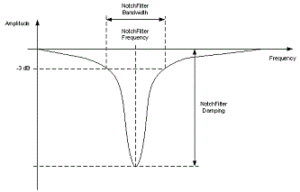Category Archives: Electronic Design
5+ Best UWB Chipset Providers Compared
16/03/2023, hardwarebee

Ultra-Wideband (UWB) technology is a wireless communication protocol that utilizes short-range, high-bandwidth radio waves to transmit and receive data over short distances. UWB chips are a key component of UWB technology, and they are used in a variety of applications such as location tracking, wireless charging, and data transfer.
Read More
The Ultimate Guide: Current Mirror
06/03/2023, hardwarebee

Current mirror is a fundamental building block of modern analog IC design. They are prevalent in amplifier circuits as a biasing network and active loads and made up of active elements like BJT and MOSFET. We hope you will enjoy this current mirror tutorial.
A current mirror is an
Watt to dBm (free) Converter
03/03/2023, hardwarebee

Welcome to HardwareBee’s Watt to dBm calculator. This Watt to dBm converter is used by 500 engineers daily.
Enter Watts
Empty
Empty
dBm Result
W
Error Message
Convert
Error Message
dBm
Watt (W) and dBm (decibel-milliwatt) are both units of power,
dBm to Watt (free) Converter
03/03/2023, hardwarebee

Welcome to HardwareBee’s dBm to Watt calculator. This dBm to Watt converter is used by 500 engineers daily.
Enter dBm
Empty
Empty
Watt Result
dBm
Error Message
Convert
Error Message
W
To convert dBm (decibel-milliwatt) to watt, you can use the
SPI vs I2C: What is the Difference?
27/02/2023, hardwarebee

SPI and I2C are the two widely used serial communication protocols. Each communication protocol consists of its syntax and rules for data transmission between devices. In this article we will discuss the difference between SPI vs I2C, but first we will describe each protocol in details.
SPI – Serial
Embedded World 2023: Promwad Showcases Edge Computing Solutions for Urban Spaces Powered by Lattice
24/02/2023, hardwarebee

Promwad, an independent electronics design house (EDH) and an official partner of Lattice, is pleased to announce its participation in Embedded World 2023 in Nuremberg, Germany, from March 14 to 16.
Promwad will showcase its latest hardware and software expertise in real-time traffic and resource monitoring in smart cities
Successive Approximation Analog To Digital Conversion (ADC) Explained
23/02/2023, hardwarebee

Successive Approximation is one of the most widely used methods of digitizing an analog signal. The majority of successive approximation ADCs have an n-bit resolution and a maximum sampling rate of 5 MBPS.
Successive Approximation DAC has more complex circuitry than digital ramp ADC but results in faster conversions.
Introduction to MOSFET Amplifier
22/02/2023, hardwarebee

When it comes to selecting an amplifier, there are many different types to choose from. While they all have unique advantages and qualities, one of the most popular amplifying components is the MOSFET amplifier. MOSFET amplifiers are incredibly versatile and offer manufacturers a wide range of options in terms of
Read MoreEmbedded World 2023: Logic Fruit Technologies to Unveil Cutting-Edge Technology Solutions
08/02/2023, hardwarebee

Nuremberg, Germany – Logic Fruit Technologies is excited to announce its participation in the Embedded World 2023 Conference and Exhibition, held from March 14th to 16th 2023 at the Nuremberg Exhibition Center.
Logic Fruit Technologies, a leader in cutting-edge technology solutions, will showcase its latest advancements in
Introduction to Notch Filter
05/02/2023, hardwarebee

Today, noise and distortion reduction are essential for signals and many other applications. One type of filter used in this field is called a notch filter. Notch filters are designed to remove unwanted noise from a signal and can be used in a variety of contexts. In this article, we
Read More

